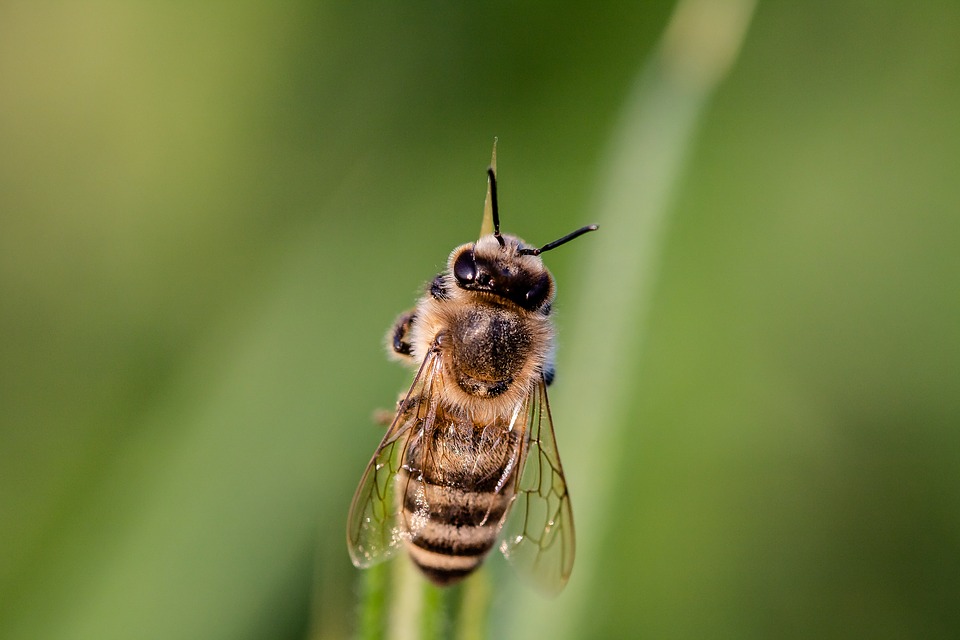Summer is here, bringing with it picnics, barbecues, and lazy days by the pool. But just as you’re enjoying the warmth of the season, bees are emerging from hibernation and may put a damper on your outdoor activities.

(Pixabay / Myriams-Fotos)
No one likes bee stings. At very least, they can itch, swell, and sting, and in more severe cases, they can trigger life-threatening allergic reactions.
Here are a few things everyone should know about bee sting allergies:
What percentage of people are allergic to bee stings?
Insect allergies affect about 5 to 7.5 percent of people, according to the Journal of Asthma and Allergy. The most common sources of insect allergies are bees, wasps, hornets, yellow jackets, and fire ants.
Are bee stings hereditary?
If your parents were allergic, you might have inherited a predisposition to allergies, but you won’t necessarily be allergic to the same things. Scientists have not found a strong link between bee sting allergies in parents and children.
How do I know if I have a bee sting allergy?
If your body reacts to a bee sting in the standard way, you’ll end up with a red bump at the site of the sting that may swell up a bit and sting like mad. The discomfort should subside within a few hours. If you’re allergic to the bee sting, however, your reaction may be much more severe, and you could experience life-threatening anaphylaxis.
The symptoms of anaphylaxis include:
- Hives on different parts of your body (apart from the sting site)
- Labored breathing
- Dizziness
- Swelling of the tongue and airways
- A rapid pulse
- Nausea (could include vomiting or diarrhea)
- Unconsciousness
If I have a bee sting allergy, will I always react with anaphylaxis?
Not necessarily. Only about 30 to 60 percent of people who experience anaphylaxis in reaction to a bee sting will experience it with subsequent stings.
What if I get stung by a bee?
If you do not have an allergy to the bee sting, you don’t need to do much except wait for the pain to subside. If the stinger is still stuck in your body, use a dull edge such as a credit card or your fingernail to scrape it out of the skin. Don’t use tweezers to pull it out—that could push more venom into the skin. You can wash the affected area, then apply ice to reduce the swelling and topical creams to reduce the itching. If pain persists, you can take an over-the-counter pain reliever. If itching persists, you can take an antihistamine.
What do I do if someone I know has an anaphylactic reaction to a bee sting?
Start by calling 911. If they know they are allergic to bee sting bites, they may carry an epinephrine auto-injector with them that you should engage immediately. You may need to perform CPR if the person stops breathing and first responders have not arrived.
What if I get stung by multiple bees?
Some bees—such as Africanized honey bees—travel and sting in a swarm. If you get multiple bites, you may experience nausea, headache, dizziness, or fever from the accumulation of venom. Symptoms will often pass quickly, but if they persist, you can seek medical help. Multiple bee stings are not usually life-threatening, but they can be serious for young children, older adults, or people with cardiovascular problems.
How can I avoid bees?
There’s no surefire way to avoid bees as you venture out this summer, but there are some steps you can take to keep them away. These include:
- Don’t leave uncovered sweet things lying around (such as a can of soda or fruit rinds).
- Don’t walk outside with bare feet.
- Keep trash cans covered.
- Avoid bright clothing—bees are attracted to it.
- Watch for signs of bee nests around your home and have them removed.
- If a bee is swarming around you, stay calm and walk away from it rather than swatting it.


